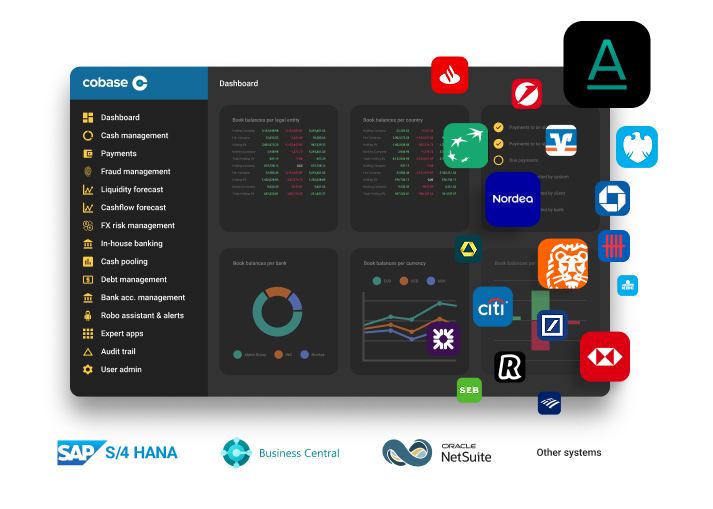To support further growth, Rituals needed to modernize its payment and bank connectivity landscape and reduce operational risk in finance. Before Cobase, payments and bank statement processing were highly manual and fragmented across bank portals and teams.
On the payments side, the Accounts Payable team prepared payment batches (vendor payments and employee expense reimbursements) in the ERP and then had to upload them separately into each individual bank portal, split per bank and currency. Approvers in finance had to log into multiple bank platforms to review and approve these payment files. This was tedious, error-prone work with limited overview of what had been uploaded, approved or rejected.
Lars Goes Manager Finance Development at Rituals tells: On the liquidity side, the AR/treasury team downloaded daily bank statements manually from different bank portals and uploaded them into the ERP for cash reconciliations. The absence of a central overview meant additional time spent on basic data collection rather than analysis.
These challenges triggered Rituals to explore a central payment hub and bank connectivity solution.
Rituals evaluated Cobase as a central payment hub and bank connectivity platform that could sit between their ERP and all banking partners.
From a finance perspective, Cobase stood out by addressing the core requirements: automation of vendor payments and bank statement flows, and a central, user-friendly platform for approvals and monitoring. The interface is intuitive; new users quickly understand where to go and how to use different modules, making onboarding short and straightforward.
From a technology and integration perspective, Cobase’s proposition was “one integration between ERP and Cobase, Cobase takes care of all the bank connections.” This relieved Rituals from building and maintaining individual bank interfaces themselves. The Cobase team was clear on what data and formats they needed, which allowed Rituals’ ERP product owner to prepare the integration efficiently with no surprises in delivery.
The collaboration during the pre-sales and design phase was another differentiator. Cobase invested time to understand Rituals’ finance and IT landscape in detail, and set realistic expectations about scope, timelines, documentation, training and change management.
Implementation: fast, phased and predictable
Rituals and Cobase agreed on a phased go-live instead of a single “big bang” implementation. Given the number of entities, bank accounts and regions involved, a sequential rollout per entity–bank combination offered better control over operational and project risk.
The contract was signed at the end of January. During the first three to four months, the joint team focused on the functional and technical design and on setting up the integration between the ERP and Cobase. The first entity went live around May; subsequent entities and banking partners were then onboarded in waves every few weeks. While Cobase onboarded the banks and connected them to the Cobase platform, Rituals prepared its internal processes, data and users for each wave of go-lives, resulting in a total implementation timeline of under six months.
Project governance was tight but pragmatic. Weekly meetings brought together AP/AR, finance, IT and Cobase, with clearly assigned roles and responsibilities. Before each go-live, the team followed a defined set of checks to validate configuration, confirm testing results and formally assess readiness.
From the ERP side, Rituals’ product owner for finance projects Cléo Bottin led the technical integration, while Cobase handled connectivity from the platform to all banks. This clean separation kept internal complexity manageable. Cléo Bottin tells, it is “quite rare” for a third-party vendor integration to run this smoothly, with such clear requirements and predictable outcomes.




